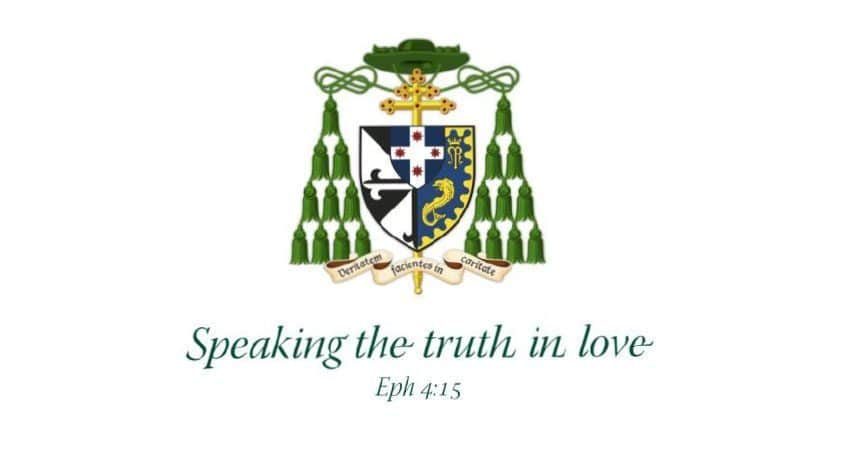HOMILY FOR MASS FOR MEMORIAL OF STS JOHN FISHER & THOMAS MORE

UNDA Strategy Meeting, Sacred Heart Church, Darlinghurst
On this day in 1535, the Lieutenant of the Tower of London woke old Bishop Fisher at 5AM for his 9AM execution. He decided to go back to sleep so to save his strength for the occasion!
What a fate for the one-time tutor to the future King Henry VIII, who along with Sir Thomas More is said to have ghost-written the Defence of the Seven Sacraments that won Henry the title ‘Defender of the Faith’! When the good bishop defended the indissolubility of one of those sacraments – marriage – and of the king’s marriage in particular, his erstwhile friend was furious; Henry was also none-too-pleased by Fisher’s resistance to his encroachment upon the Church’s prerogatives, properties and mission. In 1534 he was imprisoned in the Tower of London. In May of the following year Pope Paul III created him cardinal, hoping thereby to protect him from Henry’s wrath. But it had the opposite effect: Henry forbade the cardinal’s hat to be brought to England, declaring that he would send the head to Rome instead.
Not that the king was prejudging Fisher’s case, of course! When Fisher was arraigned for treason the following month, the only testimony given was that of Sir Richard Rich, who was to feature in More’s trial also. Fisher was found guilty and condemned to be hanged, drawn and quartered. Such was the public outcry that Henry commuted the sentence to beheading – only highlighting the parallel many were already drawing with the imprisonment and execution of John the Baptist for defending marriage.
So, when the Lieutenant of the Tower returned, Fisher was dressed in his finest for what he called his “wedding day”. From the scaffold he announced “Christian people, I am come hither to die for the faith of Christ’s holy Catholic Church” and he asked for prayers for king, country and himself. He was then executed; his corpse stripped, exposed all day and then buried without rites; his head impaled on London Bridge and later thrown into the Thames. If such a thing could be done to the greatest Churchman in England, no-one was safe: within three weeks the former parliamentary Speaker, judge, privy councillor, ambassador and Lord Chancellor, Sir Thomas More, would meet the same fate.
Fisher and More were of course friends and admirers. Both were men of faith and action, prayer and penance. Both were greatly supported by women: Fisher, by Lady Margaret Beaufort, grandmother of Henry VIII; More, by his wives and daughter. Both refused to support the king in his “great matter”, Fisher almost alone amongst the bishops and clergy, More almost alone among lawyers and MPs. Both argued that the King could no more legislate for the universal Church than the City of London for the whole realm; Henry’s actions were contrary to tradition, his own coronation oath, and the laws of England and of God. Both men were, in the words of St Peter today, “tested by fire” and convicted, “not for murder, theft or true treason”, but for being “a member of God’s household” and “believer in the Gospel”.
Fisher was of course principally devoted to sustaining the Church from within, More to extending it out into the worlds of family, work, politics and law. But both were men of the university, because this was a meeting point for those two devotions. Though neither had the advantage of a UNDA education, they were both “men of letters” and Renaissance humanists. Fisher took his B.A. and M.A. at Cambridge, was elected a fellow of Michaelhouse, then proctor of the university. In 1501 he was made Doctor of Sacred Theology and ten days later Vice-Chancellor of the University. Three years after that he was appointed Bishop of Rochester and Chancellor of the University. Until his death he continued to press for improving academic standards, harmonising of faith and the new learning, and better finance and governance. Under his influence Lady Margaret funded two university colleges (St John’s College and Christ College at Cambridge) and two university chairs in divinity (the Lady Margaret professorships at Cambridge and Oxford). Fisher attracted great scholars such as Erasmus from the continent to the university, promoted classical and biblical languages, published his own exegetical commentaries, and fostered a more educated clergy. His contribution to the university ended only with his beheading, symbol of ending a man’s mind and voice.
Thomas More went up to Oxford as a young man for a classical education, only leaving to train for the law at his father’s insistence. In due course he ensured his own children, the girls included, received an equally excellent education. Another champion of the new humanism, he was eventually to serve as High Steward of both Oxford and Cambridge universities.
In these two great university men we see that the sacred and the profane, faith and reason, the clerical state and the lay, are not opposites so much as distinctions between intersecting and complementary dimensions of life. And the University is a meeting place for such things. If every university is a community of scholars, Catholic universities are also part of a communion of faithful, institutions and ministries stretching across time and space, in organic relationship with each other and with Christ.
A genuinely Catholic university will therefore be differentiated by: its chaplaincy other pastoral care; its core curriculum, theology, philosophy and ethics (both in-discipline and across all degrees), and its particular specialties; its preparation of future workers for Catholic institutions; its practicums, choice of staff and research projects; even the ambience of its buildings. As More and Fisher devoted so much of their energy to building up the universities to benefit both church and nation, so ours must be a centre of learning and of the new evangelisation.
In this bicentenary year for Catholic education in Australia we’ve been reflecting not just upon our past achievements, but also our present purpose and future promise. From serving 31 students in a tiny school in Parramatta we’ve grown to serving more than a million at a time. Catholic schools and universities make an extraordinary contribution to the nation’s social capital and to the Church’s mission to young people.
But it is not always easy. Jesus recognises in our Gospel that His coming often means more “sword” than of “peace to earth” (Mt 10:34-39). In the trial scene in A Man for All Seasons, Robert Bolt captures the sense of the man in More’s dialogue with Sir Richard Rich. Rich had just perjured himself to More’s peril and More asks what new chain of office Rich is wearing. He is told ‘Attorney-General for Wales’. More, looking into Rich’s face exclaims: “For Wales? Why, Richard, it profits a man nothing to give his soul for the whole world… but for Wales!”
What was true for old Wales is, of course, true for New South Wales also! Building a big, powerful or prestigious university at the cost of its Catholic soul, as some say has happened in some other places, profits us nothing. Even when unappreciated, we must seek to give witness to the faith in the academy, as John did in Church and society, and Thomas in law and politics. As we engage in our discussions tonight and going forward I ask: Sts John Fisher and Thomas More, pray for us.
WELCOME TO MASS FOR MEMORIAL OF STS JOHN FISHER & THOMAS MORE
UNDA Strategy Meeting, Sacred Heart Church, Darlinghurst
Welcome to our Mass for the Memorial of Sts John Fisher and Thomas More, Martyrs. It is a pleasure to celebrate with you my great-great-great-great-granduncle John and his mate Tommo. Tonight we will be meeting to discuss the ways that the University can further contribute to the mission of the Church in Sydney and beyond, and to consider strategic opportunities going forward. I acknowledge the presence of the Vice Chancellor Prof. Francis Campbell, and senior office holders of the University. And I welcome officials from the Archdiocese and Sydney Catholic Schools.

